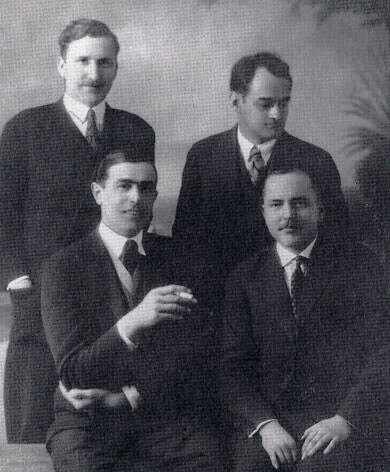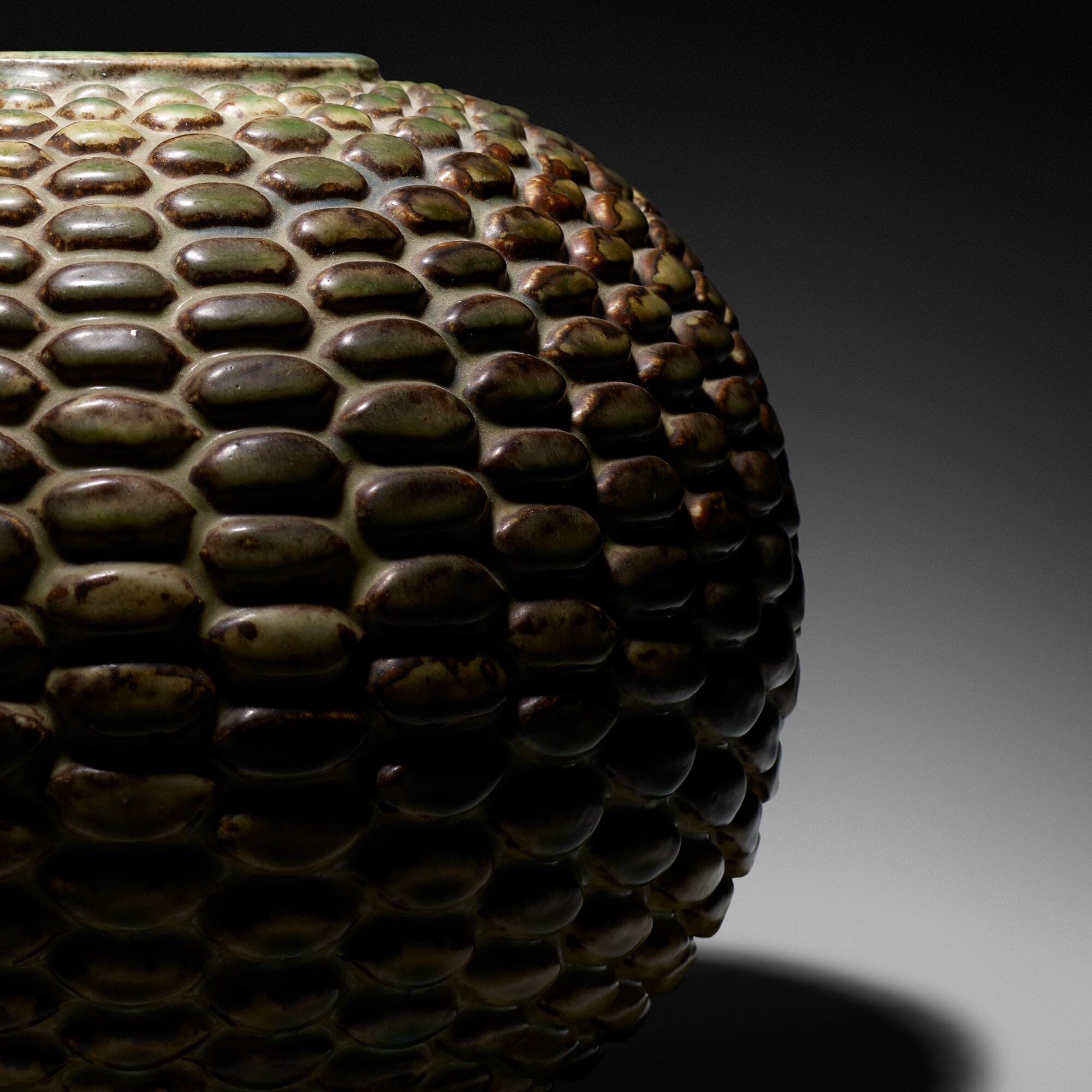219
219
Royal Copenhagen
Denmark, 1933
glazed stoneware 3½ h × 4½ dia in (9 × 11 cm)
Denmark, 1933
glazed stoneware 3½ h × 4½ dia in (9 × 11 cm)
estimate: $1,000–1,500
follow artist
Glazed signature and date to underside ‘Salto 1933’.
Axel Salto
Axel Salto (1889-1961) is perhaps Denmark’s most important ceramicist. His expressive, organic forms are the result of an approach Salto defines as "creat[ing] in accordance with nature, rather than to copy its exterior."
Works from his Budding series—made with the rich, earthy hues—feature subtly protruding forms on the surface which heighten the tonal variation and luster of the glaze. Although made of clay, his Budding vases capture the essence of flora or what Salto calls "the wonder of growth, the inward urge in living things, which must come out."



Axel Salto 1889–1961
Axel Salto, born in Denmark in 1889, transformed the field of ceramics with his unabashed imagination. Salto began his formal training at the Copenhagen Academy of Art where he studied painting and woodcuts before moving on to ceramics. In 1923 he began working at the Danish porcelain company Bing & Grøndahl winning a silver medal for his work with the firm at the Paris World’s Exhibition of 1925. After working for selection of other firms, he landed at Royal Copenhagen in the mid-1930s where he experimented with hand-building and glazing techniques developing his signature style recognizable by its rich glazes and organic forms.
In a period where function ruled design, Salto broke out and created works that were sculptural in their tactile properties. Inspired by nature, his ceramics evoked living things; with budding, sprouted and fluted form, the taxonomy of his design was a reflection of his botanical passion. In addition to natural forms, Salto was also motivated by the whimsical and the sublime. The author of several children’s books, Salto created a characterful series of goblin-like pots covered in globular warts, spikes, and bumps. During the 1950s, Salto designed textiles for the Danish fabric company L.F. Foght. Salto’s fabrics prominently displayed natural forms, and he even created a mischievous textile featuring his signature clay pots entitled Keramik. In 1951, Salto received the Grand Prix at the Milan Triennale for his ceramic works. Salto died in 1961. Today his works can be found in the permanent collections of the Victoria and Albert Museum in London and the CLAY Museum of Art in Denmark among others
Auction Results Axel Salto